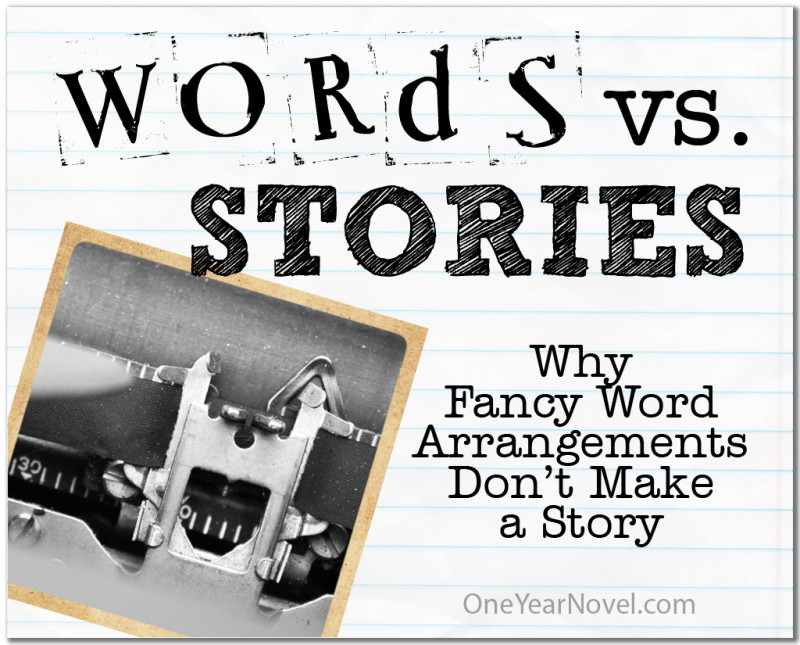How to Make Your Critique Group Genuinely Helpful, Part 2
Daniel Schwabauer
Read Part 1: Why You Should Join—or Start—a Critique Group »
Giving Feedback
If you’ve ever started a critique group, I’m guessing the first meeting went something like this:
After everyone arrived you broke out the popcorn or brownies and talked for a few minutes before asking if anyone had brought anything. Ashley raised her hand (a little sheepishly, perhaps) and passed out her first chapter. She read it aloud while everyone else followed along on her printed copies, jotting down notes where appropriate. A long, uncomfortable silence followed and eventually someone said, “It was good. I liked it.”
This, sadly, is how most critiques sessions tend to go at first. If your group is made up of young or inexperienced writers, you will have to address what to do when Ashley finishes reading.
Sure, everyone will have an opinion on her story. But without some guidance, most of these opinions will not be very helpful. They will probably be both too nice and too vague. Not that your comments should draw blood (or even tears), but “I liked it. It was good,” is not helpful. And it’s not really a critique.
You must commit to being both honest and specific. Everyone in the group should understand this up front. You will be kind, but you will also tell the truth. A critique session is no place for white lies, however small.
This means that you will praise particular things, not ambiguous things. It means when you find flaws, you will name them specifically. It doesn’t mean you need to know why you liked or disliked something. It does mean you need to be clear about what you liked and disliked. You can admire the dialogue on page 6 and hate the way the story ends without understanding why the dialogue works and the ending doesn’t. But you can’t summarize the entire story with an adjective. You can’t just call it terrible, or even good. Be specific.
To make things easier, I’ve created a blueprint for giving feedback on fiction. This is not a comprehensive list. I make no claim that my method is superior to other methods. I do claim its superiority over no method at all.
For simplicity, let’s call it the “Zoom” method. Zoom isn’t an acronym, but implies that you should start with the big picture and zoom in. Help the writer to fix her story before you tear into her sentence structure and verb-tense problems.
Why Zoom?
There’s nothing magical about starting big and working inward to the small stuff, but I suggest it for two reasons.
First, if you find several major story issues, you shouldn’t address more nit-picky things. New writers don’t need their prose torn to shreds. They need someone to tell them what‘s wrong with their story. They need help clarifying plot and characters and theme. Sure, they might be able to stand a little guidance about showing instead of telling, or avoiding passive sentences. But they don’t need to focus on these things. Story first, polish later.
Second, even experienced writers sometimes find that a big-picture solution offered in critique makes later sections of a story redundant or even unusable. Why spend time polishing prose that’s destined for deletion?*
So we’re going to work from big to small, moving inward along each major point. Emotion takes precedence over Change, which takes precedence over Characters and Dialogue.
1. Emotion
Does the text create emotion?
What do you feel? This is key to any story, but writers often don’t know which emotions they are creating. One of the most helpful things you can do for any manuscript is point out where it is being funny, tense, heart-breaking, etc. If you are bored by a page, say so.
What does the writer intend?
We can’t always know the answer to this question, but often the intention is clear even if the effort is unsuccessful. You can tell when a five-year-old is trying to be funny even if his joke falls flat. If you can see that a writer means to make you cry but the prose is so sappy that you instead feel like giggling, point this out.
What changes might help create the intended emotion?
Is there an obvious way to make the tension bigger or the joke funnier? Sometimes emotion is hindered by having too much of something. Other times the writer is cheating by telling us what to feel rather than showing us a situation with emotive consequences.
Conflict is often the core of an emotional exchange. Is it too weak?
Look for ways to heighten the core conflict. Once you’ve explored how the conflict can be made bigger or sharper or more consequential, look for ways to add other sorts of conflict to the text. For instance, in an argument that leads to a woman’s husband storming out of the house, can there be another conflict pulsing in the background? Perhaps a literal storm that he is rushing off into, or an internal conflict such as her feelings of guilt over spending their savings without telling him.
Tension / Suspense
Does the writer raise important questions and then force you to wait for the answer? This is how story tension is created. Good storytellers dole out answers sparingly in early sections of a novel. Answers to major story questions are a signal the story is coming to an end. Point out areas in early chapters where the writer is answering questions too frequently or not raising them often enough.
Unexpected Elements. (Surprise is powerful.)
Is the action expected? If so, is it because the writer told you too much in an earlier section, or is it because the story itself is cliched? Look for ways the manuscript can be taken in unexpected directions. Often these ideas already exist in the story, but the writer has shied away from them without knowing it.
2. Change
Does it resolve (for a short story or novel) or Does it have a change of values (for a novel chapter)?
Resolution is what makes a story fulfilling. A story that seems to go nowhere will always produce dissatisfaction in the reader. Similarly, a chapter that ends with nothing important having happened will feel like a waste of the reader’s time. Every chapter should produce a change of values. Someone learns something or does something important to the story.
Does the change of values relate to the theme in some way?
Is the theme reinforced or demonstrated? Theme can be hard to examine in a critique group, but try anyway. Often it takes the input of other writers to show an author what she is really writing about in a story.
Believability
Is the excerpt fundamentally unbelievable? If as a reader you cannot suspend your disbelief, the writer needs to know.
Fulfilling Story Promises
If the change of values or resolution doesn’t work, then either the beginning or the ending needs to be reworked.
3. Character/Dialogue
Arcs
Do characters and situations change over time? Just as Scrooge becomes a different person by the end of A Christmas Carol, story characters should change over the course of a novel or short story. The change doesn’t have to be as large as Scrooge’s, but it must be evident in, and result from, the story. Point out any change that is essentially invisible or feels tacked on.
Motivation
Every character should be driven primarily by a significant desire. Do we know what the main characters want? Is it evident on every page, if only by implication? Unmotivated characters will kill a story. The reader loses interest because the characters themselves have lost interest.
Personality
Characters feel flat when we cannot identify what makes them a person, (i.e., their personality.) Personality is not the same thing as mood or emotion. An angry look is an expression of personality, not a defining trait. Look for ways in which story characters are not acting true to themselves. If a character’s personality seems consistently bland to you, point this out. The writer may be focusing too much on plot and not paying attention to his story people.
Consistency
Are the story characters consistent from chapter to chapter? Do their personalities or motivations change for no reason?
State of Mind
Is the character’s state of mind clear? If the hero is terrified, is this terror demonstrated not just through his actions and words, but through the narration? Do we feel the terror too? And does it affect the flow of the story even as it is affected by that same story flow?
Dialogue
Does it match the character?
Does it enhance the emotion/theme?
Are any lines ambiguous? Can they serve more than one purpose?
Don’t try to address every one of these core issues. Instead, look for places where an excerpt works really well or doesn’t work at all. Chances are the cause can be found here.
And keep in mind that positive feedback on big-picture elements is important too. If the conflict has grabbed you by the throat, if the characters are fascinating, if the dialogue is compelling and witty, say so!
Once you’ve addressed emotion, change and characters/dialogue, zoom in to the nuts and bolts of the prose. Again, start with setting/description and move down the list.
4. Setting/Description
Does it enhance/reinforce the theme/emotion/mood?
Beautiful descriptions may not belong in the middle of an intense action scene.
How does it influence the characters?
A setting that appears at convenient places but never inconveniences the characters in a story will not feel real.
Any “white sheet” backgrounds?
Many first drafts seem to take place in a blank fog or against a white sheet because the author has failed to establish a concrete sense of place. This is often a failure of the writer’s imagination, but sometimes it’s simply a matter of not communicating what she sees. She knows the action is taking place in a castle but hasn’t revealed this to the reader.
Any purple prose?
Are there any places where the writer seems to be showing off? If you noticed it, then it pulled you out of the story and needs to be weeded out.
5. Tightening
Tense changes
Point-Of-View (POV) shifts
Unnecessary phrases or words
Pacing
Is the writer matching sentence length to the action of the story?
6. Action Words
Passive voice
Excessive was-ing sentences.
Weak verbs
In particular, any conjugation of “is” and “have,” but other verbs can be considered weak where a stronger verb lends itself to the sentence and story flow. “He went” is sometimes weaker than “He ran.”
Adverbs
You can’t get rid of all of them, but they frequently indicate a weak verb.
___________
That’s it. That’s the Zoom blue-print. Yes, I have left off some things. No, I don’t rigidly follow this when I give feedback. But I do work from big-picture to small. I do try to zoom inward from Story to Polish. And each of these points is something you should be familiar with as a potential flaw or strength.
Next week I will look at an even more terrifying subject: how to receive feedback.
* Yes, it can help you improve as a writer to practice fixing prose you aren’t going to keep. But such exercises are best reserved for private writing times rather than group effort.




This is GREAT! Just what I needed – something that tells me clearly what to focus on. Thank you Mr S!